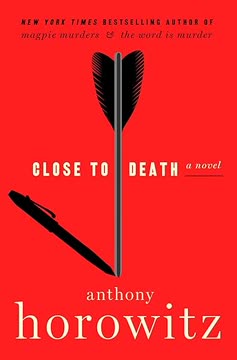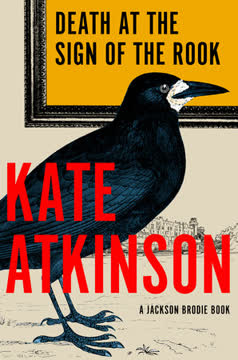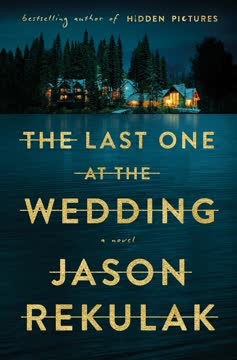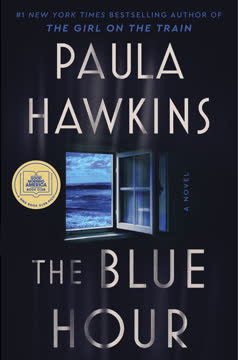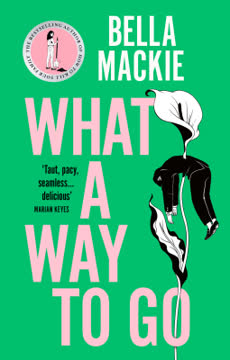Plot Summary
Welcome to the Experiment
The Multimedia Art MA at Royal Hastings launches as a bold experiment: a small, handpicked group of students, each with a different background, are brought together by tutor Gela Nathaniel. The course is designed to bridge art and the workplace, but beneath the surface, it's a pressure-cooker of ambition, insecurity, and hidden agendas. The narrative opens with the external examiner, Ben Sketcher, struggling to make sense of the year's events, hinting that something terrible may have happened—possibly even a death. The reader is invited to piece together the truth from emails, chat logs, and essays, setting the stage for a story where nothing is quite as it seems and everyone has something to hide.
Six Strangers, One Studio
Six students—Jem, Patrick, Jonathan, Alyson, Ludya, and Cameron—meet for the first time, each bringing their own baggage and expectations. The group is a mix of ages, experience, and personalities: from Jem, the youngest and most ambitious, to Patrick, the gentle older shopkeeper, to Alyson, the enigmatic "star" artist. Early conversations reveal both excitement and tension, as practical issues like studio access and personal quirks quickly become flashpoints. The group's dynamic is unstable from the start, with alliances forming and suspicions brewing, foreshadowing the conflicts to come.
Rules, Rivalries, and Rumors
Gela lays down strict rules—no phones in the studio, limited access, and a focus on teamwork. These rules, meant to foster professionalism, instead fuel resentment and rivalry. Alyson's demand for more access and Jem's obsession with fairness set them on a collision course. Rumors swirl about favoritism, theft, and who really deserves to be there. The group's chat logs become a battleground for passive-aggressive comments and outright accusations, as the students struggle to adapt to the course's demands and to each other's personalities.
The First Assignment Sparks
The first assignment—design a logo and multimedia promo—brings out the best and worst in the group. Alyson's work dazzles, earning her Gela's praise and the envy of her peers. Jem, feeling overlooked, becomes fixated on exposing Alyson's supposed theft of materials. Patrick, struggling with technology, leans on others for help. The group's critiques of each other's work are laced with both support and sabotage, as the pressure to stand out intensifies. A small fire during a presentation becomes a symbol of the group's volatility and the dangers of unchecked ambition.
Accusations and Alliances
Jem's campaign against Alyson escalates, with accusations of theft and cheating. Gela tries to mediate, but her own biases and the department's precarious position complicate matters. Private messages reveal shifting alliances: Patrick tries to play peacemaker, while Ludya and Cameron keep their distance. The group's trust erodes as everyone begins to suspect everyone else of ulterior motives. The seeds of deeper secrets—about identities, relationships, and the true purpose of the course—are sown, setting up the betrayals to come.
Fire, Feedback, and Fallout
The fire in the studio, sparked by Alyson's reckless demonstration, forces the group to confront the consequences of their actions. Gela's official report downplays the incident, but the students' private conversations reveal anger, fear, and a sense of injustice. The fallout from the fire—both literal and metaphorical—deepens the rifts within the group. Assignments are regraded, roles are reassigned, and the students' resentment toward Gela and each other grows. The incident becomes a turning point, after which nothing is quite the same.
The Somerset Sourcing Trip
The group travels to Somerset to source materials for their final project, but the trip is marred by logistical disasters, exhaustion, and a mysterious altercation. A radio is "borrowed" from the RD8 museum under suspicious circumstances. The group's WhatsApp messages hint at a violent confrontation and a cover-up. When they return, one student—Alyson—begins to disappear from the studio, while the others close ranks. The trip marks the beginning of a spiral into paranoia, guilt, and the blurring of reality and performance.
The Disappearing Act
Alyson's attendance dwindles, and her presence is maintained only through chat messages and hearsay. Jem, ever the investigator, becomes convinced that something has happened to her. The rest of the group, including Gela, collude—consciously or not—to maintain the illusion that Alyson is still part of the team. The narrative fractures, with each student's diary and essay offering a different version of events. The sense of unease grows, as the reader is left to wonder: is Alyson missing, dead, or simply hiding in plain sight?
The Voice in the Radio
Jem and Patrick, tinkering with the old radio from Somerset, discover it emits a strange, distorted voice pleading for help. The group becomes obsessed with the idea that the radio is a "Spiritfinder," a device that can communicate with the dead. The voice's messages change daily, fueling speculation, fear, and guilt—especially as it seems to echo the words of the missing Cameron. The radio becomes a symbol of the group's collective trauma and the secrets they are desperate to keep buried.
Teamwork and Treachery
As the final project deadline looms, the group's teamwork devolves into mutual suspicion and covert sabotage. Assignments are faked, roles are swapped, and special-consideration forms become tools for gaming the system. Gela, under pressure to make the course a success, turns a blind eye to ethical breaches. The students' private messages reveal a web of lies, blackmail, and shifting loyalties. The line between art and crime blurs, as the group prepares to present their installation to RD8—knowing that the truth could destroy them all.
The Final Project Unravels
The group's multimedia installation—a tunnel and a giant clay head—becomes the focus of their anxieties and ambitions. RD8's feedback demands major changes, pushing the students to the brink. Jem's soundscape, once the centerpiece, is sidelined. The head is secretly hollowed out and filled with a resin block containing a preserved human finger—evidence of a crime. As the event approaches, the group's unity collapses, and each member prepares for the possibility of exposure, arrest, or worse.
Truths, Lies, and Long Essays
The students' final essays, meant to be reflections on their artistic growth, become confessions, accusations, and desperate attempts to control the narrative. Jem reveals her blindness and her role in manipulating the radio's voice. Patrick confesses to a lifetime of running from guilt and complicity. Jonathan and Suzie's true identities and motives are exposed. The examiner, Ben Sketcher, arrives—posing as the official external examiner—to uncover the truth and ensure justice is done.
The Event: Unveiling and Uproar
At the RD8 event, the group's installation is revealed to an audience of corporate guests, but the real drama unfolds behind the scenes. Jem, determined to save her sculpture, discovers the hidden resin block and the truth about Cameron's fate. The examiner confronts the group, and the police are called. The event becomes a spectacle of art, crime, and catharsis, as the group's secrets are finally brought into the light.
Aftermath and Accountability
In the wake of the event, the group splinters. Some members disappear, others face arrest, and a few—like Jem—emerge with their reputations intact. Gela submits her final grades, carefully crafting a narrative that protects the institution and herself. The examiner's investigation uncovers the full extent of the group's deception, but the official story remains sanitized. The installation is destroyed, the evidence incinerated, and the survivors left to reckon with what they have done.
The Real Examiner Arrives
The real external examiner, Philippa Moreton, arrives to find the course in disarray and the official records tampered with. She pieces together the true story from the students' essays, chat logs, and police evidence. The university, eager to avoid scandal, quietly approves the course for another year. The fate of the missing and the guilty remains ambiguous, as the machinery of academia grinds on, indifferent to the human cost.
Resolutions and Repercussions
Jem launches her career as a soundscape artist, determined to move on from the trauma. Patrick disappears, possibly returning to Ireland, haunted by his actions. Jonathan and Suzie face prison, while Ludya escapes with a suspended sentence. Gela survives with her job intact, but her conscience troubled. The university and RD8 distance themselves from the scandal, and the world moves on, having learned little from the experiment.
The Art of Survival
The story closes with reflections on the nature of art, teamwork, and survival. The course, designed to prepare students for the real world, instead became a crucible for their darkest impulses. The survivors are left to rebuild their lives, carrying the scars of what they did—and what they failed to do. The final message is one of resilience, but also a warning: in the pursuit of success, it is all too easy to lose sight of what truly matters.
Characters
Jemisha "Jem" Badhuri
Jem is the youngest and most driven member of the group, a visually impaired artist with a gift for sculpture and sound. Her ambition is matched only by her willingness to bend rules and disrupt the status quo. Jem's blindness is both a source of vulnerability and a superpower—she "sees" more than others realize, using sound and intuition to navigate the world. Her relentless pursuit of recognition leads her to manipulate situations, expose others' secrets, and ultimately save the group from disaster (albeit unintentionally). Jem's journey is one of self-discovery, as she learns the limits of ambition and the value of asking for help.
Patrick Bright
Patrick is the oldest student, a shopkeeper with a traumatic past and a longing for redemption. He is a people-pleaser, always trying to keep the peace, but his passivity makes him vulnerable to manipulation. Patrick's guilt over past failures—both personal and criminal—drives him to take desperate action when the group's secrets threaten to destroy them. His role in the cover-up of Cameron's death and the disposal of evidence is both tragic and understandable, a testament to the corrosive power of groupthink and fear. Patrick's fate is left ambiguous, a man forever running from his own conscience.
Jonathan Danners
Jonathan presents himself as a late-blooming artist, but is in fact a climate activist with a vendetta against RD8, the company at the heart of the final project. His calm, managerial exterior masks deep trauma and a willingness to manipulate others for his cause. Jonathan's relationship with "Alyson" (really his wife Suzie) is both a cover and a source of tension. As project manager, he orchestrates the group's actions, but his obsession with the radio and the voice leads him down a path of paranoia and moral compromise. Jonathan's ultimate goal is justice for his family, but the cost is high.
Alyson Lang / Suzie Danners
"Alyson" is actually Suzie Danners, an engineer and activist posing as her artist sister to infiltrate the course. Suzie's adaptability and ruthlessness make her both invaluable and dangerous. Her impulsive theft of the radio from Somerset sets the group's downfall in motion. Suzie's ability to endure hardship—rooted in a childhood of poverty and survival—enables her to do what others cannot, including maintaining the cover-up of Cameron's death. Her disappearance and reappearance are central mysteries, and her relationship with Jonathan is the emotional core of the conspiracy.
Ludya Parak
Ludya is a freelance designer and single mother, juggling the demands of the course, her children, and her role in the activist cell. She is the group's time manager, but her real function is as a fixer and enabler. Ludya's cynicism and dark humor mask deep anxiety and a longing for stability. When the group's actions cross a line, she is the first to break ranks and seek help, providing crucial evidence to the authorities. Ludya's arc is one of survival and reluctant heroism.
Cameron Wesley
Cameron is ostensibly a marketing professional seeking creative renewal, but is actually a private investigator hired to monitor the group for RD8. His true loyalties are ambiguous, and his presence unsettles the others. Cameron's death—accidental or not—becomes the group's original sin, the secret that binds and destroys them. His voice, preserved in the radio, haunts the survivors and becomes a symbol of the consequences of secrecy and betrayal.
Gela Nathaniel
Gela is the architect of the course, driven by a desire to save her department and her own career. She handpicks the students, balancing talent, diversity, and utility. Gela's willingness to bend rules, cover up scandals, and play favorites makes her both a protector and a danger. Her relationship with Cameron and her complicity in the group's crimes are gradually revealed. Gela's final act is to craft a narrative that saves the institution, if not her own soul.
Ben Sketcher
Ben is the external examiner, but also a shadowy figure with his own agenda. His investigation into the course's events is both official and personal, as he seeks justice for Cameron and the truth about RD8's technology. Ben's methods are unorthodox, and his presence destabilizes the group. In the end, he becomes both judge and participant, blurring the line between observer and actor.
Mae Blackwell
Mae is RD8's liaison, responsible for managing the company's relationship with the university and the students. She is both a facilitator and a manipulator, using the group for RD8's own ends. Mae's true motives are hidden behind corporate jargon and strategic politeness, but her actions have far-reaching consequences for everyone involved.
Hannah O'Donnell
Hannah is the course's admin, responsible for logistics and student welfare. She is often overlooked, but her observations and interventions are crucial. Hannah's role as a confidante and record-keeper makes her the story's moral center, quietly ensuring that the truth is preserved, even as others try to erase it.
Plot Devices
Epistolary Structure and Fragmented Narrative
The novel's primary device is its epistolary format: emails, chat logs, diary entries, and essays form a mosaic of perspectives. This structure creates a sense of immediacy and intimacy, while also allowing for unreliable narration and conflicting accounts. The reader is forced to piece together the truth from partial, biased, and sometimes deliberately misleading sources. The fragmented narrative mirrors the group's fractured relationships and the elusive nature of truth in a world of spin and self-presentation.
Foreshadowing and Red Herrings
The story is laced with foreshadowing—early hints of disaster, missing students, and a possible death. Red herrings abound: accusations of theft, rumors of affairs, and the mysterious voice in the radio all serve to distract from the real crime. The gradual revelation of each character's secrets keeps the reader guessing, while the true nature of the group's conspiracy is only revealed in the final chapters.
The MacGuffin: The Radio and the Voice
The radio, stolen from Somerset, becomes the story's MacGuffin—a seemingly innocuous object that holds the key to the group's fate. The voice it emits is both a literal and metaphorical haunting, representing guilt, trauma, and the consequences of unchecked ambition. The radio's true nature—as a piece of dangerous technology, a decoy, or a work of art—is left ambiguous, reflecting the story's themes of perception and reality.
Unreliable Narrators and Shifting Perspectives
Each character's account is colored by their own motives, fears, and self-justifications. The use of multiple narrators and conflicting documents forces the reader to question what is real and who can be trusted. The final "truth" is a composite, shaped as much by omission and denial as by confession.
Metafiction and Self-Referentiality
The presence of the examiner as both character and reader surrogate blurs the line between fiction and reality. The novel's structure—inviting the reader to "examine" the evidence—turns the act of reading into an investigation. The story's conclusion, with its references to the next year's course and the prospectus, satirizes the commodification of education and the endless cycle of institutional self-preservation.
Analysis
"The Examiner" is a masterful deconstruction of the modern university, the art world, and the myth of collaborative creativity. Through its innovative structure and complex characters, the novel exposes the dangers of unchecked ambition, the corrosive effects of secrecy, and the ease with which institutions prioritize reputation over truth. The story's central metaphor—the group project as both crucible and cover-up—serves as a warning about the limits of teamwork and the perils of groupthink. The novel's use of disability, diversity, and identity politics is both incisive and subversive, challenging the reader to question their own assumptions about merit, fairness, and inclusion. Ultimately, "The Examiner" is a meditation on the cost of survival in a world where art, ethics, and ambition collide—and a reminder that, in the end, the truth is always a collective creation.
Last updated:
Review Summary
The Examiner receives mixed reviews, with many praising Hallett's innovative epistolary style and intricate plot twists. Readers appreciate the engaging puzzle-like narrative and diverse characters, though some find it convoluted and slow-paced. The book's unique format, combining emails, texts, and essays, is both lauded and criticized. While some reviewers consider it Hallett's best work yet, others feel it falls short of her previous novels. Overall, it's described as a captivating, if divisive, mystery that challenges readers to piece together clues.
Similar Books
Download PDF
Download EPUB
.epub digital book format is ideal for reading ebooks on phones, tablets, and e-readers.

